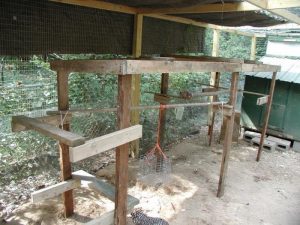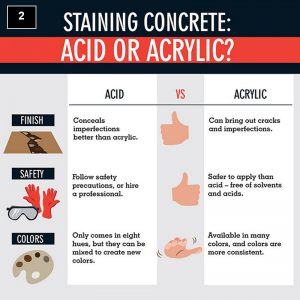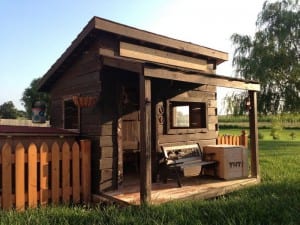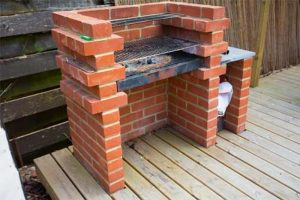Last Updated on March 7, 2024 by teamobn
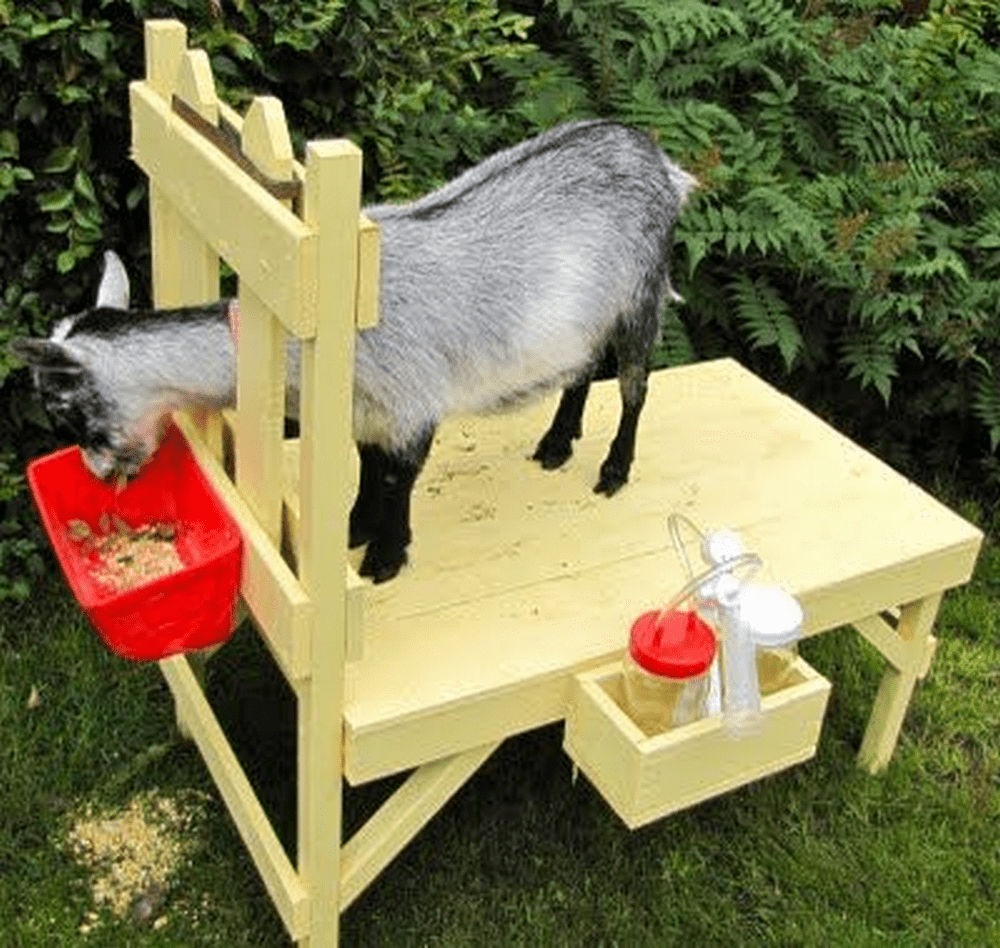
Goat milk is slowly becoming a more popular choice for those looking for an alternative to cow milk. Goat milk is not only nutritious, but it also has a number of health benefits. Goat milk is a good source of protein, calcium, and other essential nutrients. It is also lower in cholesterol and fat than cow milk. Goat milk is also easier to digest than cow milk, making it a good choice for those with lactose intolerance.
Goat milk also contains fewer allergenic proteins than cow milk, making it a good choice for those with milk allergies. Goat milk is also a good source of conjugated linoleic acid, which has been shown to have a number of health benefits. These benefits include reducing the risk of cancer, obesity, and diabetes. Additionally, conjugated linoleic acid has been shown to improve heart health and reduce inflammation.
However, milking goats can be a challenge, especially if your goat is quite uncooperative. I know this from experience, as my brother-in-law owns a homestead with goats. He’s told me that it can be difficult to get them to stay still long enough to milk them properly.
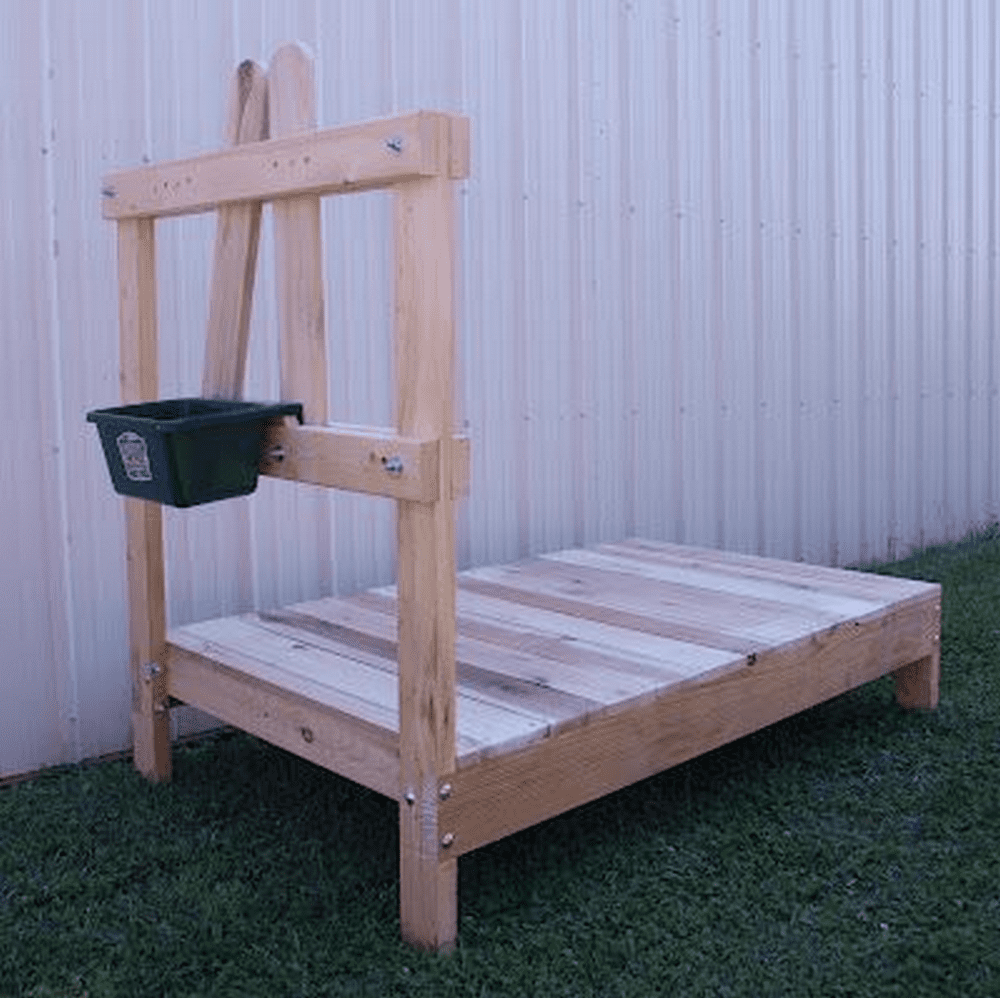
One summer, my kids spent their vacation with their uncle on his farm. They loved helping out with the animals, but one task they always dreaded was milking the goats. They would spend hours wrestling with the goats, trying to keep them still long enough to get the milk. This may sound like fun, but it’s actually a recipe for a back injury.
Then, my husband had enough. He couldn’t stand all the wrestling and grappling that was going on. He went online and looked for a goat milking stand. After an extensive search, he found a milking stand that cost $60. He was surprised that something that looked so fragile could be so expensive. Being the DIY-er that he is, he decided to create his own milking stand based on the concept of the one he found.
He was able to create a strong and sturdy milking stand using spare pallets and other materials that were lying around the garage. The entire project only cost him less than $5 and he was able to finish it in a couple of hours. He was very pleased with the final product.
Contents
Building a Milking Stand
Materials
- 2 wood pallets
- Screws
Tools
- Drill
- Ruler
- Pencil
- Any wood-cutting tool
Instructions
Step 1: Prepare Your Workspace
Ensure you have a clean, flat surface to work on. Gather all materials and tools before starting. Safety is paramount, so wear protective gear such as gloves and safety glasses.
Step 2: Disassemble Pallets
Carefully disassemble your wood pallets. Use the wood-cutting tool to remove nails or screws that hold the pallets together. You want to salvage as much wood as possible for your project.
Step 3: Design Your Milking Stand
Using the ruler and pencil, sketch the design of your milking stand on one of the wooden planks. The design should include a platform for the goat to stand on and a stanchion (head gate) to secure the goat’s head. Decide on the dimensions based on the size of your goats. A typical platform is about 2 feet wide by 4 feet long, with a height that allows you to milk comfortably.
Step 4: Cut the Wood
Based on your design, begin cutting the wood into the necessary pieces. You’ll need a flat platform piece, side supports, legs for the stand, and pieces to create the stanchion. Ensure all cuts are straight and to the correct length for stability.
Step 5: Assemble the Platform
Lay out the cut pieces for the platform. Use the drill and screws to attach the legs to the underside of the platform piece at each corner. Make sure the platform is level and sturdy.
Step 6: Construct the Stanchion
Assemble the pieces for the stanchion. It should have a base that can be secured to the platform, vertical supports, and a crosspiece that can be moved to open and close around the goat’s neck. Ensure the stanchion is the right size for your goat’s head and that it can be easily operated to safely secure the goat.
Step 7: Attach the Stanchion to the Platform
Position the stanchion at one end of the platform and secure it with screws. Ensure it is firmly attached and does not wobble.
Step 8: Add Safety Features
Smooth any rough edges or corners to prevent injury to yourself or your goats. You can also add a small barrier around the edges of the platform to prevent the goat from stepping off.
Step 9: Test Your Milking Stand
Before using it with a goat, test the stability and functionality of your milking stand. Make adjustments as necessary to ensure safety and comfort for both you and the goat.
Step 10: Finish and Maintain
Consider treating the wood with a non-toxic sealant to protect it from moisture and make cleaning easier. Regularly inspect your milking stand for any damage or loose screws and repair as needed.
Benefits of DIY Goat Milking Stands
Creating a goat milking stand by yourself offers a range of benefits, from cost savings to customization. This guide’ll explore the advantages of taking the DIY route for your goat milking needs.
Cost-Effective Solution
One of the most immediate benefits of a DIY goat milking stand is the significant cost savings. Commercial stands can be expensive, and by choosing to build one yourself, you only have to invest in materials, which you may already have lying around. This makes the DIY approach highly economical, especially for small-scale farmers or those just starting.
Custom Fit for Your Goats
Not all goats are the same size or temperament. Building your own milking stand allows you to tailor the dimensions and features to suit your specific goats. You can adjust the height, length, and width to accommodate different breeds or ages, ensuring a comfortable fit that can make the milking process smoother and more efficient.
Satisfaction of Handcrafting
There’s a unique satisfaction that comes from building something with your own hands. Completing a DIY goat milking stand gives you a functional piece of equipment and a sense of achievement. This project can serve as a creative outlet and a practical way to enhance your goat-keeping setup.
Improved Goat Handling
A well-designed milking stand improves goat handling, making the milking process safer and more pleasant for both you and your goats. A secure stand reduces the risk of injury by keeping goats stable during milking, which is especially important for those that may be nervous or fidgety.
Easy Maintenance and Repairs
When you build your milking stand, you become intimately familiar with its construction and materials. This familiarity makes performing any necessary maintenance or repairs easier, as you’ll know exactly how it was put together. You can quickly identify and fix any issues, ensuring that your stand remains in good condition for years.
Environmentally Friendly
Using reclaimed materials like wood pallets for your milking stand is an environmentally friendly choice. Repurposing these materials not only saves them from the landfill but also reduces the need for new resources. This approach aligns with sustainable farming practices, contributing to a healthier planet.
Enhanced Milking Experience
Finally, a DIY goat milking stand can enhance the overall milking experience. With a stand that’s designed to your specifications, you can ensure a comfortable position for both you and your goats, making the process more efficient and enjoyable. This improved experience can improve milk yield and quality, benefiting your farm’s productivity.
Building your goat milking stand is a rewarding project with numerous benefits. From cost savings to custom fit and environmental sustainability, the advantages make it a worthwhile investment for any goat owner.
Click on any image to start the lightbox display. Use your Esc key to close the lightbox.

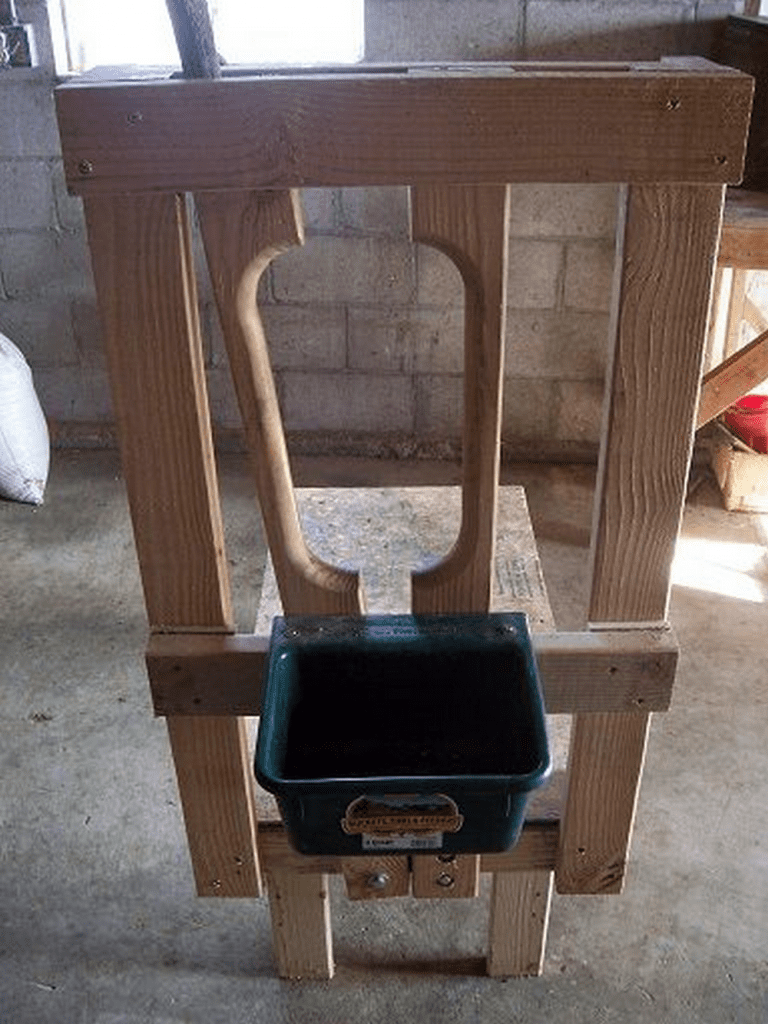
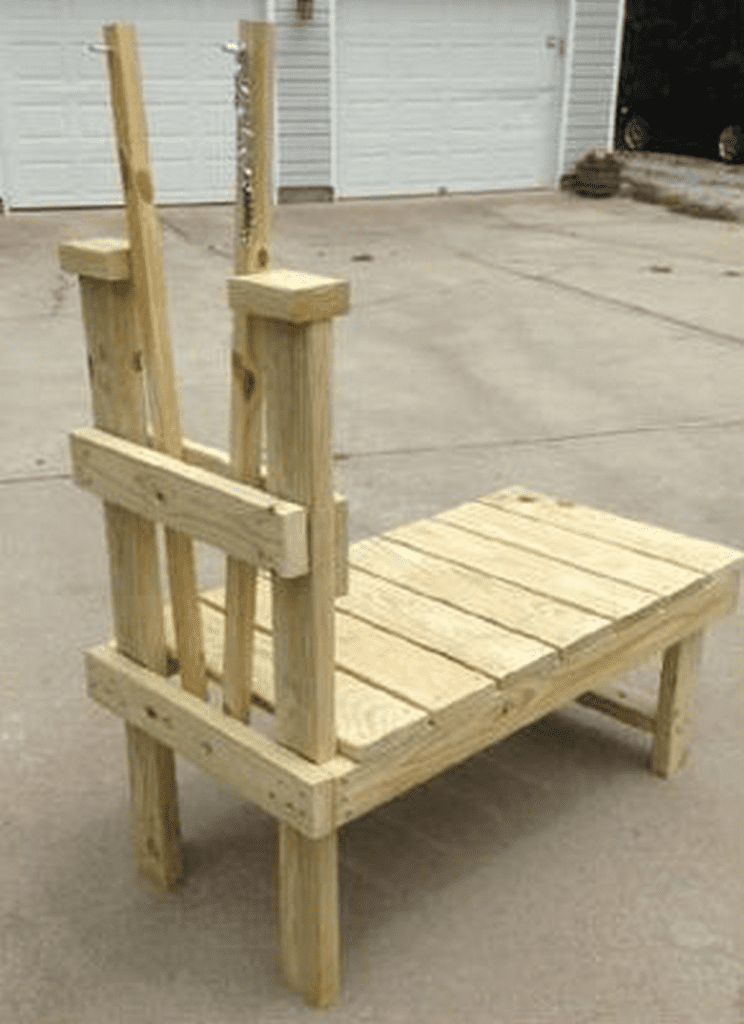
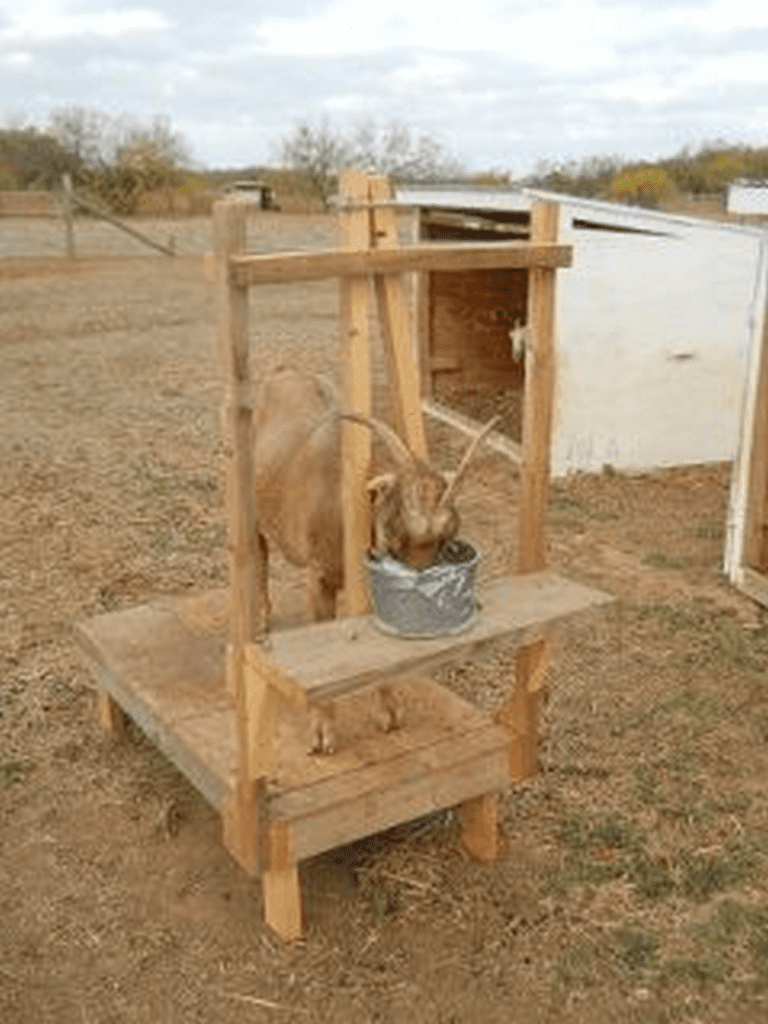


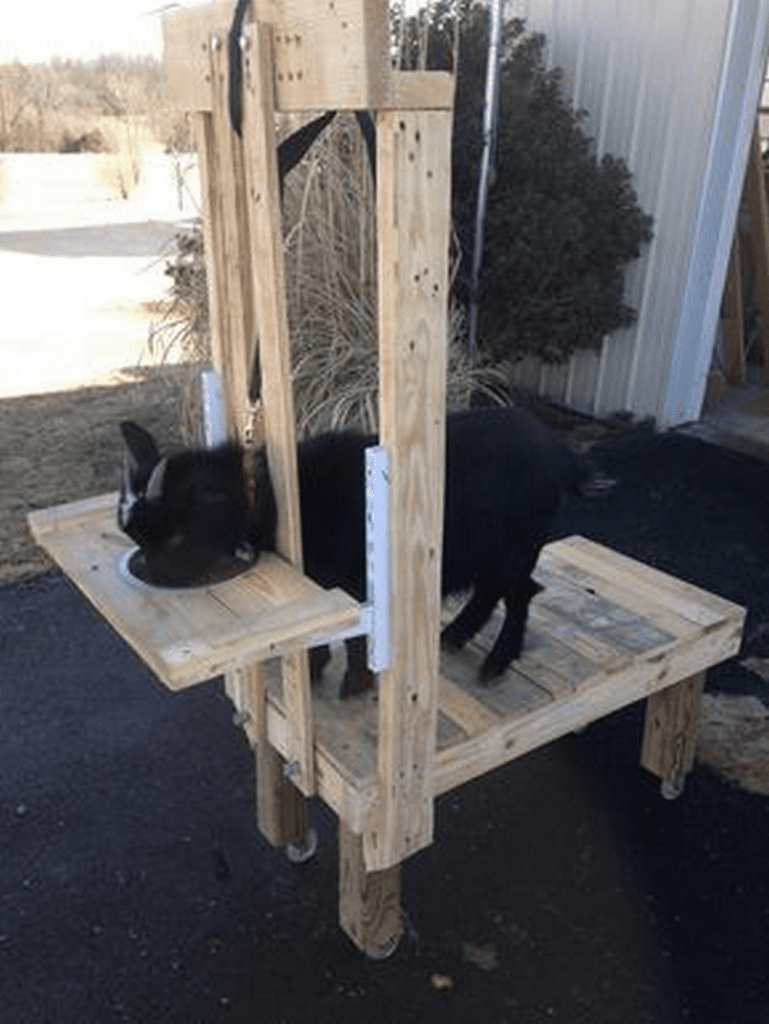
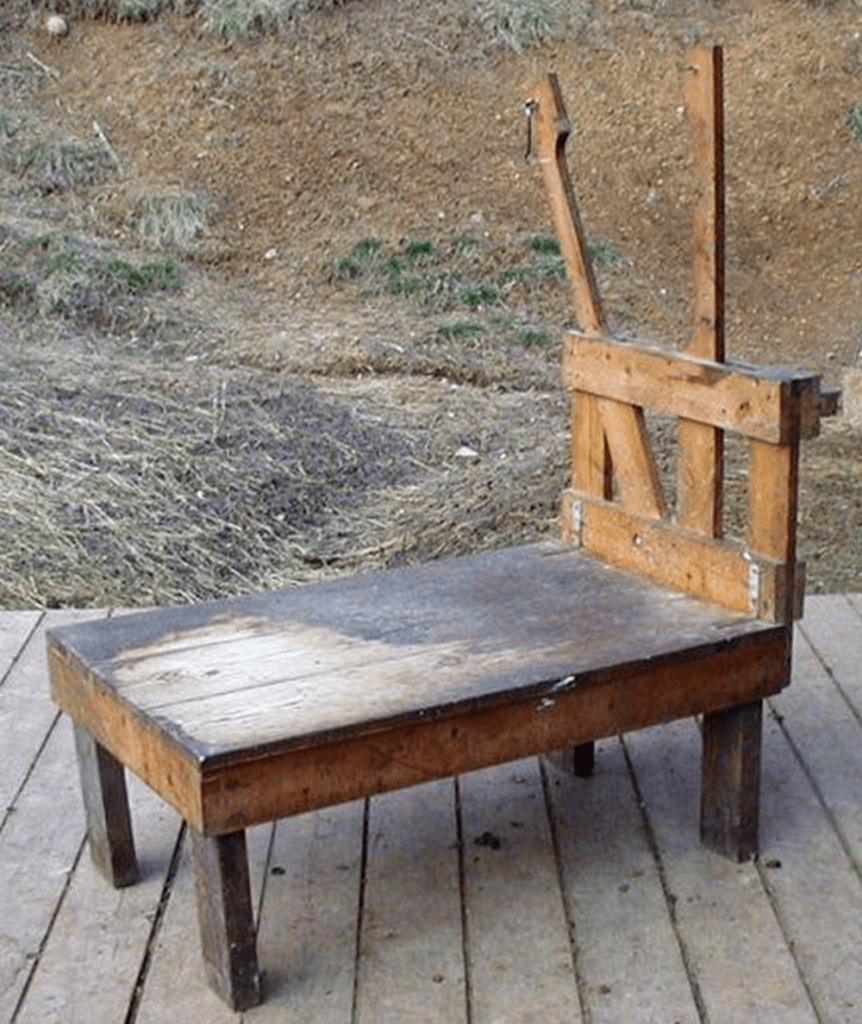
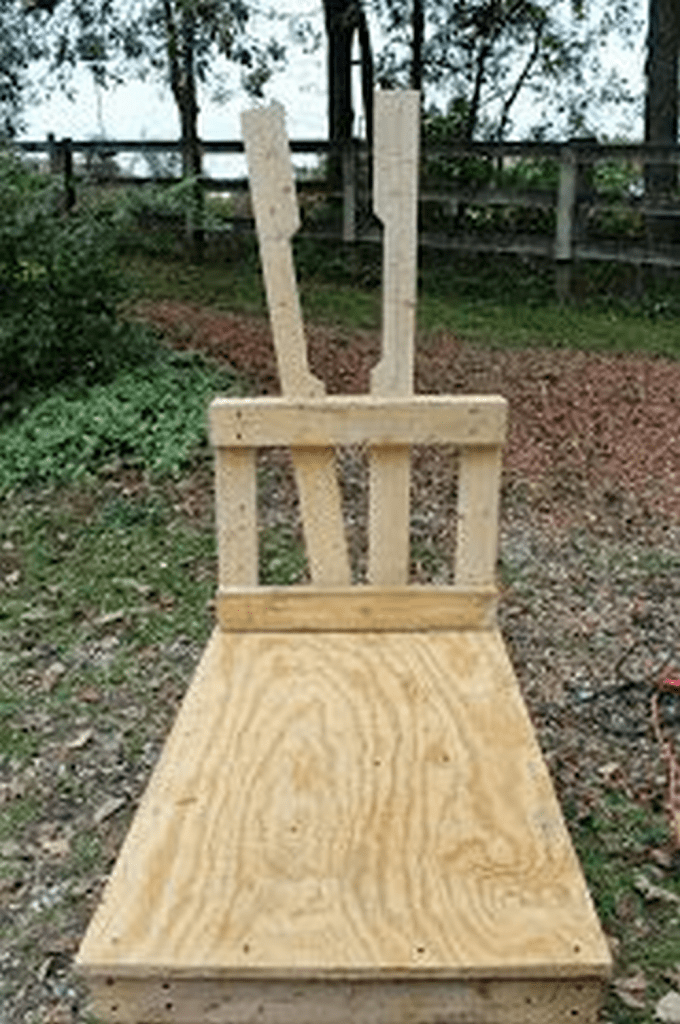
Below is a visual instruction making a milking stand for your goats.
Safety Considerations for Both Goats and Users
Building a goat milking stand from scratch offers a unique opportunity to tailor the design to specific needs. However, it’s crucial to prioritize safety to protect both the goats and the user. Proper planning and execution can prevent accidents and ensure a smooth milking routine.
Design Safety
- Ergonomic Design for Humans: Ensure the stand height and dimensions accommodate the user’s height and reach. An ergonomic design reduces the risk of back strain or injury during milking.
- Comfort for Goats: The stand should have a comfortable platform for the goat, with a non-slip surface to prevent falls. Edges should be rounded or covered to avoid cuts or scrapes.
- Adjustable Features: Incorporate adjustable features to accommodate goats of different sizes and ages. This flexibility ensures that each goat is comfortably and securely positioned, minimizing the risk of injury.
- Guard Rails: Install guard rails around the perimeter of the platform. These rails help prevent goats from accidentally stepping off the edge during milking, offering an additional layer of safety.
- Smooth Mechanisms for Adjustments: Design any adjustable components, such as height adjustments or headlocks, to operate smoothly without sudden movements. Sharp or jerky motions can startle the goat, potentially leading to injury.
Material Safety
- Non-toxic Materials: Use materials that are safe for animals. Avoid treated woods that may contain harmful chemicals which could be ingested by goats licking or chewing on the stand.
- Sturdy Construction: The stand must be strong enough to support the goat’s weight without collapsing. Use high-quality screws and ensure all parts are securely fastened.
- Durable Fasteners: Opt for corrosion-resistant screws and fasteners. This choice not only enhances the longevity of the milking stand but also prevents the potential risk of injury from weakened or rusted parts.
- Quality Wood Selection: Choose high-quality, splinter-free wood. Rough or splintered wood can cause injuries to both goats and handlers. Sanding down all wooden surfaces and edges can further minimize this risk.
- Avoid Sharp Edges: During construction, ensure that all metal components, such as brackets or nails, are flush with the surface or adequately covered. Exposed sharp edges pose a significant risk of cuts and scrapes.
Operational Safety
- Secure Restraint System: Incorporate a gentle, but effective restraint system to prevent the goat from jumping off mid-milking. Ensure the system is adjustable to fit different goat sizes and breeds without causing discomfort.
- Smooth Operation: Moving parts, like adjustable platforms or latches, should operate smoothly to avoid startling the goat. Regular maintenance checks can prevent sudden malfunctions.
- Emergency Release Mechanism: Incorporate an easy-to-use emergency release mechanism in the restraint system. This ensures that the goat can be quickly and safely released in an emergency to prevent injury.
- Clear Access and Exit Paths: Design the stand with clear access and exit paths for the goat. This minimizes the risk of tripping or stumbling for both the goat and the handler, facilitating a smooth entrance and exit from the stand.
- Tool and Equipment Storage: Integrate storage solutions for milking tools and equipment that are easily accessible yet out of the goat’s reach. This prevents accidents caused by animals coming into contact with potentially hazardous equipment.
Environmental Safety
- Stable Placement: Position the milking stand on stable, level ground to prevent tipping. Consider the environment where the stand will be used and make adjustments for outdoor or uneven surfaces.
- Weather Considerations: If used outdoors, ensure the stand is weather-resistant to prevent the weakening of materials over time. This includes considering the effects of moisture, temperature changes, and sunlight exposure.
- Ventilation: If the milking stand is used in an enclosed space, ensure adequate ventilation to maintain a healthy environment for both goats and humans. Proper airflow can prevent the buildup of harmful gases and maintain a comfortable temperature.
- Electrical Safety: For milking stands that incorporate electrical components (such as automated milking machines), ensure all wiring is properly insulated and kept away from areas accessible to goats. Regular checks should be conducted to prevent electrical hazards.
- Pest Control: Implement measures to keep the milking area free from pests and rodents that can disturb the goats and pose health risks. Use safe, non-toxic pest control methods to ensure the animals’ well-being and milk quality.
Safety considerations are integral to designing and using a DIY goat milking stand. By addressing these areas, you can create a secure and efficient milking environment that benefits both the goats and the user. Regular inspections and maintenance of the stand are essential to sustain safety standards and prolong the life of your homemade milking stand.
Accessories and Enhancements
A basic goat milking stand serves its primary function well, but with a few additions, it can become even more versatile and user-friendly. From comfort upgrades for your goats to efficiency boosts for handlers, the right accessories and enhancements can make a big difference.
Comfort Accessories for Goats
Adding cushions or pads to the platform and headrest areas can greatly increase comfort for the goats, encouraging them to stay calm and still during milking.
Applying a non-slip surface to the stand’s platform ensures better footing for goats, reducing stress and the risk of slips.
Efficiency Enhancements for Handlers
A built-in holder or docking station can keep the equipment secure and within easy reach for those using milking machines, streamlining the milking process.
Install organizers or hooks for storing milking supplies, such as teat disinfectants, wipes, and brushes. This keeps everything organized and easily accessible.
Health and Safety Upgrades
Coating the stand with a quick-clean or antimicrobial surface can make it easier to keep the stand sanitized, promoting better health for the goats and quality of the milk.
Incorporating a weighing scale into the design allows for regular monitoring of goat health and milk production efficiency, helping to identify any issues early.
Portable Design Features
Adding folding mechanisms can transform the milking stand into a portable unit, making it easier to move or store when not in use.
For those who may need to milk in different locations, adjustable legs can ensure the stand remains stable on uneven ground.
Technological Enhancements
Attaching LED lights can provide better visibility during early morning or late evening milking sessions, ensuring accuracy and safety in low-light conditions.
An automated feed dispenser can entice goats onto the stand and keep them occupied during milking, improving efficiency and reducing the need for manual feeding.
By exploring and integrating these accessories and enhancements, your DIY goat milking stand can evolve to meet the goats’ and their handlers’ changing needs and preferences. Customizing your milking stand improves the overall milking experience and supports the health and productivity of your goat herd.
Conclusion
Crafting a DIY goat milking stand presents a rewarding project that leads to significant cost savings and customization options tailored to specific needs. With the right accessories and enhancements, the milking process becomes more efficient, safer, and more comfortable for both goats and handlers.
Incorporating safety features and ergonomic design further ensures the well-being of all involved, making daily milking routines smoother and more enjoyable. Ultimately, a homemade goat milking stand is a testament to the ingenuity and dedication of those committed to sustainable and humane farming practices.


